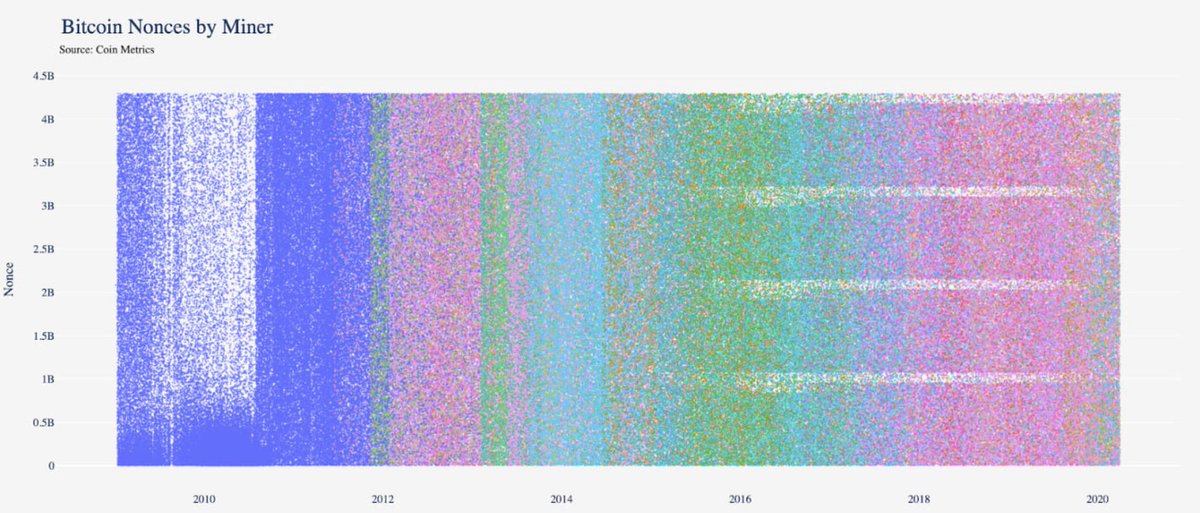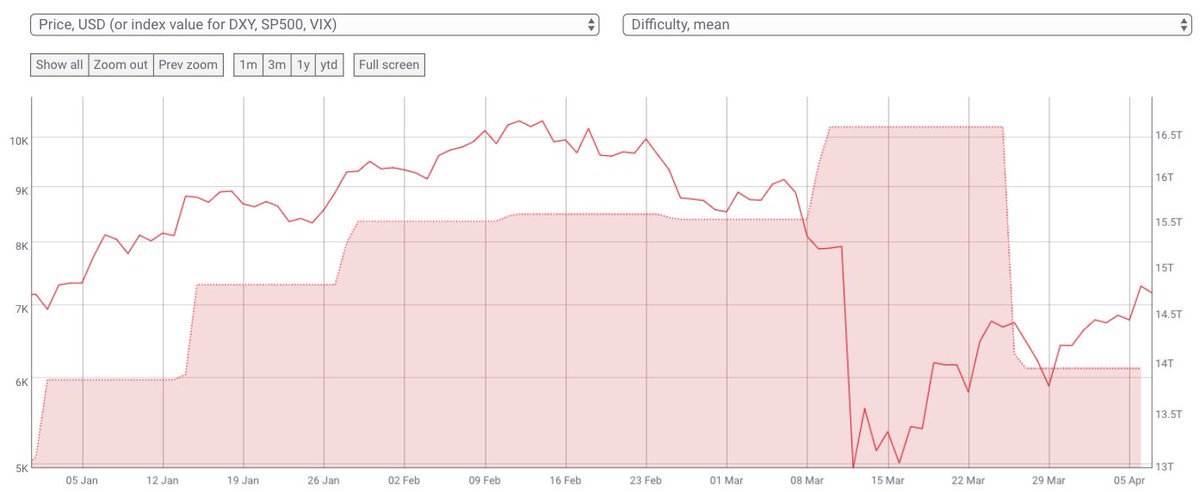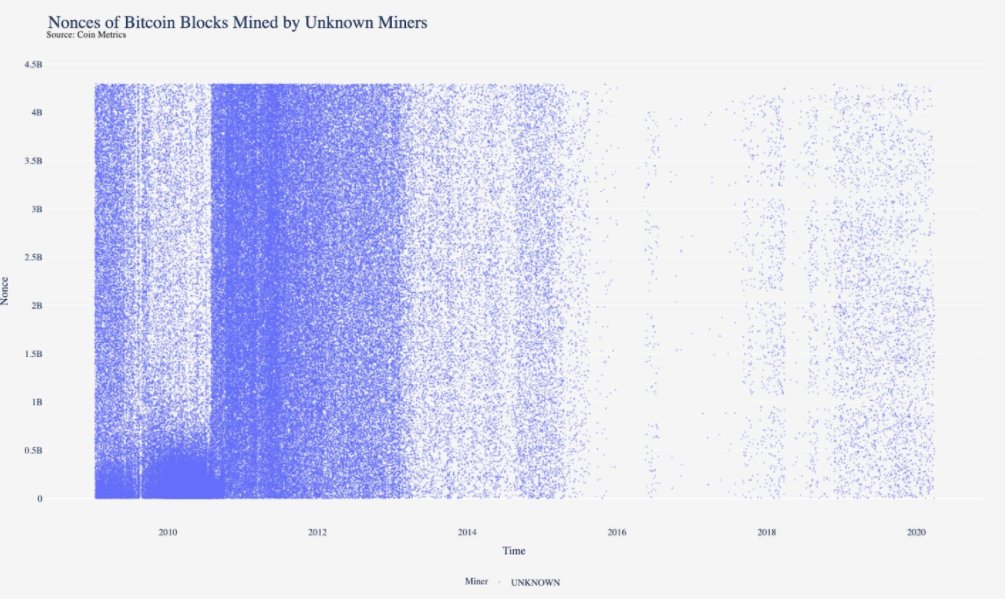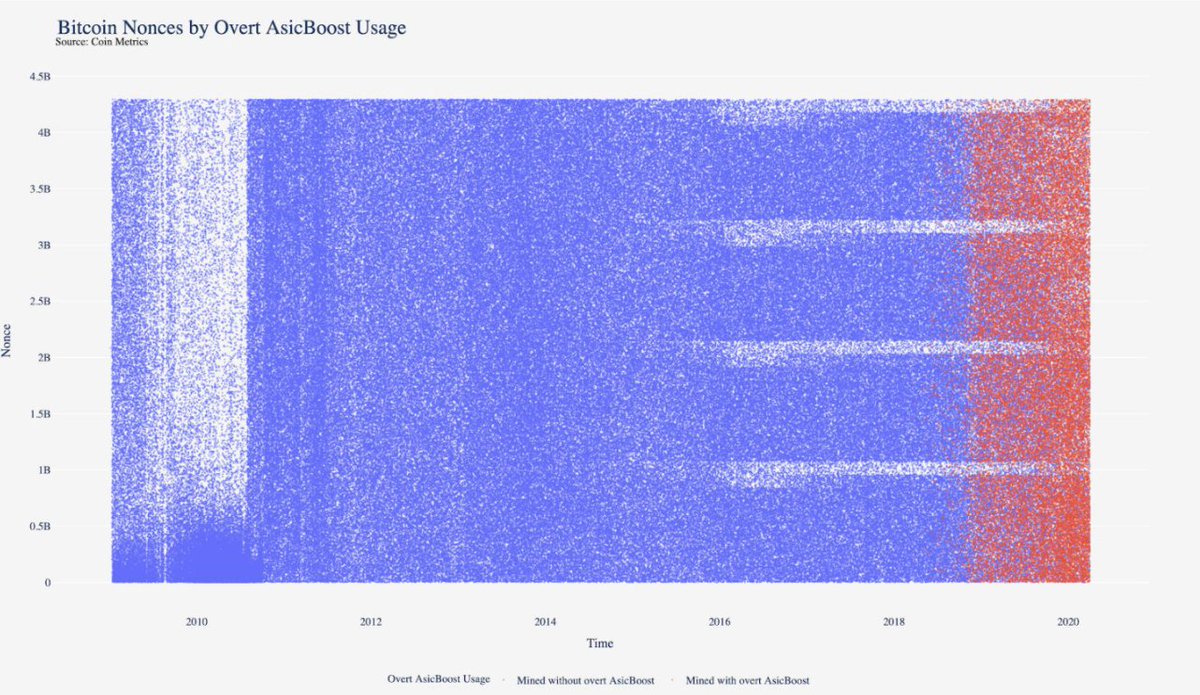Bitcoin mining is evolving and it is -quite literally- a beautiful thing to see.
In this week’s SOTN, @karimhelpme showcases a fascinating type of #Bitcoin https://abs.twimg.com/hashflags... draggable="false" alt=""> data, a distribution of nonces; the magical numbers miners compete to find.
https://abs.twimg.com/hashflags... draggable="false" alt=""> data, a distribution of nonces; the magical numbers miners compete to find.
Can you guess what these lines represent? https://abs.twimg.com/emoji/v2/... draggable="false" alt="👇" title="Down pointing backhand index" aria-label="Emoji: Down pointing backhand index">
https://abs.twimg.com/emoji/v2/... draggable="false" alt="👇" title="Down pointing backhand index" aria-label="Emoji: Down pointing backhand index">
In this week’s SOTN, @karimhelpme showcases a fascinating type of #Bitcoin
Can you guess what these lines represent?
These streaks have to do with the way S7 and S9 family of ASICs sample nonces; how they approach the cryptographic puzzle in mining.
Patterns began in late 2015, which coincides with the release of the S7. In 2016, when the S9 was released, they became narrower.
Patterns began in late 2015, which coincides with the release of the S7. In 2016, when the S9 was released, they became narrower.
Want to get a sense of how miners are able to handle severe price shocks?
Extremely. Low. Operational. Costs.
We can assume that because usage of the S9 (considered by many as "obsolete") can still be observed in 2020, which is truly remarkable after 4 years.
Extremely. Low. Operational. Costs.
We can assume that because usage of the S9 (considered by many as "obsolete") can still be observed in 2020, which is truly remarkable after 4 years.
It might be that thousands of S9s were brought back online for a last run prior to the halving, but most were prematurely retired in March after prices crashed
This made it seem like the price crash had a huge impact on the difficulty when this decrease was set to happen anyways
This made it seem like the price crash had a huge impact on the difficulty when this decrease was set to happen anyways
It was also interesting to see the impact of the Big Block Wars on miner privacy.
Between late 2015 and late 2017 miners began doxxing themselves, hence the low frequency of unknown miners.
Why? To signal support for the various proposals at the time, like the NYA. Look it up!
Between late 2015 and late 2017 miners began doxxing themselves, hence the low frequency of unknown miners.
Why? To signal support for the various proposals at the time, like the NYA. Look it up!
A long standing question we& #39;ve faced is "how coordinated are Bitcoin miners"?
I used to be on the "not coordinated at all" camp, but here& #39;s some interesting data: when BTC hit 3k in 18& #39; the first firmware to enable overt AsicBoost was released & look at this update coordination:
I used to be on the "not coordinated at all" camp, but here& #39;s some interesting data: when BTC hit 3k in 18& #39; the first firmware to enable overt AsicBoost was released & look at this update coordination:
Don& #39;t forget to check out the full write up, it& #39;s truly packed with interesting Bitcoin history: https://coinmetrics.substack.com/p/coin-metrics-state-of-the-network-375">https://coinmetrics.substack.com/p/coin-me...

 Read on Twitter
Read on Twitter data, a distribution of nonces; the magical numbers miners compete to find.Can you guess what these lines represent? https://abs.twimg.com/emoji/v2/... draggable="false" alt="👇" title="Down pointing backhand index" aria-label="Emoji: Down pointing backhand index">" title="Bitcoin mining is evolving and it is -quite literally- a beautiful thing to see.In this week’s SOTN, @karimhelpme showcases a fascinating type of #Bitcoin https://abs.twimg.com/hashflags... draggable="false" alt=""> data, a distribution of nonces; the magical numbers miners compete to find.Can you guess what these lines represent? https://abs.twimg.com/emoji/v2/... draggable="false" alt="👇" title="Down pointing backhand index" aria-label="Emoji: Down pointing backhand index">" class="img-responsive" style="max-width:100%;"/>
data, a distribution of nonces; the magical numbers miners compete to find.Can you guess what these lines represent? https://abs.twimg.com/emoji/v2/... draggable="false" alt="👇" title="Down pointing backhand index" aria-label="Emoji: Down pointing backhand index">" title="Bitcoin mining is evolving and it is -quite literally- a beautiful thing to see.In this week’s SOTN, @karimhelpme showcases a fascinating type of #Bitcoin https://abs.twimg.com/hashflags... draggable="false" alt=""> data, a distribution of nonces; the magical numbers miners compete to find.Can you guess what these lines represent? https://abs.twimg.com/emoji/v2/... draggable="false" alt="👇" title="Down pointing backhand index" aria-label="Emoji: Down pointing backhand index">" class="img-responsive" style="max-width:100%;"/>





